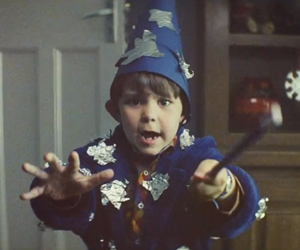 Manipulation: the action of controlling someone in a clever or unscrupulous way.
Manipulation: the action of controlling someone in a clever or unscrupulous way.
It’s a touchy subject, but arguably advertising in its purest form is manipulation. Campaigns want to change behaviour or elicit a response. You can’t argue with that.
But we’re not in the business of manipulation, are we? We’re in the business of moving and compelling people to engage with, share and advocate a brand or product.
We’re in the business of storytelling.
Meet documentary maker Ken Burns—a master of manipulation through the medium of storytelling. He’s the man behind titles such as The Civil War and Baseball. He argues a good point and one that has inspired this blog post.
Manipulation is present in every story whether we like it or not.
“Jean-Luc Godard once said ‘cinema is telling the truth 24 times a second.’ Maybe. It’s lying 24 times a second, too. All story is manipulation. Is there an acceptable manipulation? You bet. ‘Oh my, I was moved to tears by your film.’ I manipulated that. That’s part of storytelling. I didn’t do is disingenuously. I did it sincerely. I was moved by that too.”
We can apply this to telling a brand’s story. We’ll manipulate an audience into a response by moving them and engaging them with an emotion. We might even, on occasion, move them to tears.
It doesn’t matter what medium you choose—print, social media, television—wherever there is a story arc, there is manipulation.
As storytellers it’s our job to bring a brand story to life. We craft that emotional hook. It’s our responsibility to move an audience. It’s our responsibility to make sure we do that sincerely and not disingenuously.
Manipulation is okay when it’s rooted in the fabric of the story we’re telling and not rooted in a sales pitch or promise.
Here’s an example.
You’re at home in front of the television, fast-forwarding the commercial break until suddenly something catches your eye. You stop and rewind, and play again. You watch it closely. And watch it one more time. Then you call through to the kitchen ‘Hey Barbara, come through here and check out this advert.’
What’s just happened? You were in control of what you were watching, weren’t you? In fact, you weren’t even watching it until one advert drew you back. What compelled you to stop and watch?
The story.
Just one of 24 lies or truths in a second that resonated. You were more concerned with how the story ended. By watching the story, you inherently understood which brand was telling it. You stopped, watched and shared. Probably you’ll buy that brand now, because you were moved to, by the story.
Since Christmas is around the corner, and everyone is talking about the new John Lewis advert, let’s look at how they tell a story.
This is their award-winning ad from last year. A little boy waits around impatiently for Christmas until finally it’s the morning he’s been waiting for. He’s out of bed before you can say “Jingle Bells” and into his parents’ room, just to give them a present.
Watch it again and see if it doesn’t move you still. Just a little, a year later.
That’s an emotional hook. That’s a sincere and compelling story.
Now let’s look at another John Lewis spot from mid-year. Never Knowingly Undersold. Two lovers live out their love story across two different eras. The audience is compelled to remember the things that matter. It puts an emotion before the brand or product.
That’s a good story.
You see, sometimes it’s okay to manipulate. But only when a genuinely compelling story does the legwork, not a disingenuous strapline, offer or promise.
Do you agree or disagree?